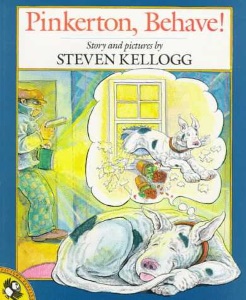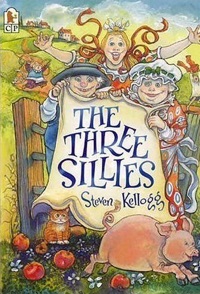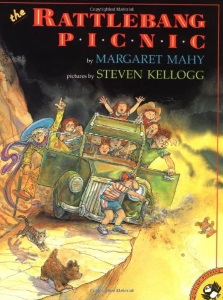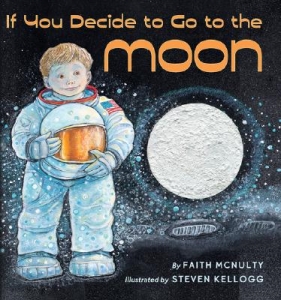2018 School Spending Survey Report
Colleagues and Co-Conspirators
by Steven Kellogg
For the past fifteen years I have regularly interspersed the time I spend sequestered in my Connecticut studio writing and illustrating picture books with journeys back and forth across the country to present programs in schools, libraries, and other settings where people interested in children and their literature congregate.
by Steven Kellogg
 For the past fifteen years I have regularly interspersed the time I spend sequestered in my Connecticut studio writing and illustrating picture books with journeys back and forth across the country to present programs in schools, libraries, and other settings where people interested in children and their literature congregate. During that time I have had an opportunity to work with a great many creative teachers and librarians, and I am convinced that they are the unsung heroes of our society. Educators have posterity in their hands. They are given the responsibility of shaping the next generation, and reading teachers and librarians have the specific and awesome charge of making accessible to every child the complex and exciting inheritance of our written language.
For the past fifteen years I have regularly interspersed the time I spend sequestered in my Connecticut studio writing and illustrating picture books with journeys back and forth across the country to present programs in schools, libraries, and other settings where people interested in children and their literature congregate. During that time I have had an opportunity to work with a great many creative teachers and librarians, and I am convinced that they are the unsung heroes of our society. Educators have posterity in their hands. They are given the responsibility of shaping the next generation, and reading teachers and librarians have the specific and awesome charge of making accessible to every child the complex and exciting inheritance of our written language. In Robert Frost's poem "The Tuft of Flowers," a worker sends a message in thought to an absent colleague: "'Men work together,' I told him from the heart, / 'Whether they work together or apart.'" Reading teachers and librarians collaborate this way with authors and illustrators. We are colleagues and co-conspirators who put our energies separately, and yet together, into the important work of bringing books to life for young readers.
In Robert Frost's poem "The Tuft of Flowers," a worker sends a message in thought to an absent colleague: "'Men work together,' I told him from the heart, / 'Whether they work together or apart.'" Reading teachers and librarians collaborate this way with authors and illustrators. We are colleagues and co-conspirators who put our energies separately, and yet together, into the important work of bringing books to life for young readers.Part of the power of the picture book as an educational tool and as an art form is derived from the fact that it communicates in two voices, verbal and visual. In the most successful examples of the picture book genre, these components do not rehash the same material but rather reinforce and enhance each other like two dissimilar, but related, melodies in a duet that is eloquently sung by different instruments. Each distinctive voice provides its own information and insights, but if the two are orchestrated within the format of the turning pages so that they intermingle and merge with harmony, vitality, tension, and excitement, the new entity they create will soar powerfully and magically above the sum of its parts, and the result will be a feast for the eye, the ear, and the spirit.
One of the questions I am asked most frequently during programs at schools, libraries, and colleges is: "What comes first in making a book, the story or the pictures?" When I am both the author and the illustrator, I find that the two components tend to spring to life simultaneously in the form of fragmented series of images with words attached. They are like little pieces of film with sound, and l often feel like a film editor as I splice some sequences together and cut others, trying countless combinations in order to find the most effective movement for the book. Both the writing and the artwork must be of the highest possible caliber, but the way in which they are integrated deserves equal attention. The flow of the text is juxtaposed with illustrations that are energized with graphic vitality, and then they must be choreographed with the movement of the turning pages so that the interaction ebbs and surges compellingly throughout the book.
 When a book's author and artist are not the same person, the two normally work separately. The illustrator receives the manuscript from the editor at the publishing house to which the author submitted it, and, as the visual life of the book develops, the author is kept apprised of the artist's progress by the editor. The way in which the editor oversees the collaboration is akin to the spirit in which a conductor coordinates the instruments in different areas of an orchestra, the difference being, of course, that the editor-conductor is presiding over the creation of an entirely new piece. Sometimes, as the pictorial component of the book is taking shape, ideas emerge for changing the text so that the desired union of the words and the illustrations can be more successfully accomplished. It is the editor who presents the illustrator's suggestions to the author and then coordinates their respective points of view. Inspiration, collaboration, and trust are important ingredients in the creation of a picture book. I am very grateful to the authors whose stories I have been asked to illustrate, and also to the editors, art directors, designers, and printers with whom I've been privileged to collaborate over the years. The successful completion of a picture book depends on the contributions of many talents.
When a book's author and artist are not the same person, the two normally work separately. The illustrator receives the manuscript from the editor at the publishing house to which the author submitted it, and, as the visual life of the book develops, the author is kept apprised of the artist's progress by the editor. The way in which the editor oversees the collaboration is akin to the spirit in which a conductor coordinates the instruments in different areas of an orchestra, the difference being, of course, that the editor-conductor is presiding over the creation of an entirely new piece. Sometimes, as the pictorial component of the book is taking shape, ideas emerge for changing the text so that the desired union of the words and the illustrations can be more successfully accomplished. It is the editor who presents the illustrator's suggestions to the author and then coordinates their respective points of view. Inspiration, collaboration, and trust are important ingredients in the creation of a picture book. I am very grateful to the authors whose stories I have been asked to illustrate, and also to the editors, art directors, designers, and printers with whom I've been privileged to collaborate over the years. The successful completion of a picture book depends on the contributions of many talents. However, when the books are printed and bound, the creative role passes to the people who are closest to the children, and we depend upon them to share the books with care, enthusiasm, and love. Until a picture book is looked at and read, it remains a darkened theater. That theater is illuminated when an adult opens the book with a child, and, as the pages turn, the curtain rises on successive acts and scenes. Through the reading and sharing, the words pulsate with life, and the illustrations move and glow with action, feeling, and vitality. Of course, each book must stand on its own merit and earn applause and approval from whoever experiences it. But if a teacher, librarian, or parent brings the child and the book together with a sensitive understanding of that individual child and with an enthusiasm for that particular book, it makes an enormous difference in the quality, of the book's reception. If you, as a caring adult, will recommend and share and read the book aloud as if you were part of its creative life — as if you were presenting it as a treasured gift — then that book has a much greater chance of being special to that child with whom you've shared it. And you will be remembered as being part of that book, and part of that gift, as surely as if your name were engraved on the jacket and the title page — as a colleague, a co-conspirator, a creative partner.
However, when the books are printed and bound, the creative role passes to the people who are closest to the children, and we depend upon them to share the books with care, enthusiasm, and love. Until a picture book is looked at and read, it remains a darkened theater. That theater is illuminated when an adult opens the book with a child, and, as the pages turn, the curtain rises on successive acts and scenes. Through the reading and sharing, the words pulsate with life, and the illustrations move and glow with action, feeling, and vitality. Of course, each book must stand on its own merit and earn applause and approval from whoever experiences it. But if a teacher, librarian, or parent brings the child and the book together with a sensitive understanding of that individual child and with an enthusiasm for that particular book, it makes an enormous difference in the quality, of the book's reception. If you, as a caring adult, will recommend and share and read the book aloud as if you were part of its creative life — as if you were presenting it as a treasured gift — then that book has a much greater chance of being special to that child with whom you've shared it. And you will be remembered as being part of that book, and part of that gift, as surely as if your name were engraved on the jacket and the title page — as a colleague, a co-conspirator, a creative partner.From the November/December 1990 issue of The Horn Book Magazine. Click here to see the May/June 2016 Horn Book Magazine Special Issue: Collaborations preview. For more, click the tag Collaborations.
RELATED
RECOMMENDED
ALREADY A SUBSCRIBER? LOG IN
We are currently offering this content for free. Sign up now to activate your personal profile, where you can save articles for future viewing.






Add Comment :-
Be the first reader to comment.
Comment Policy:
Comment should not be empty !!!